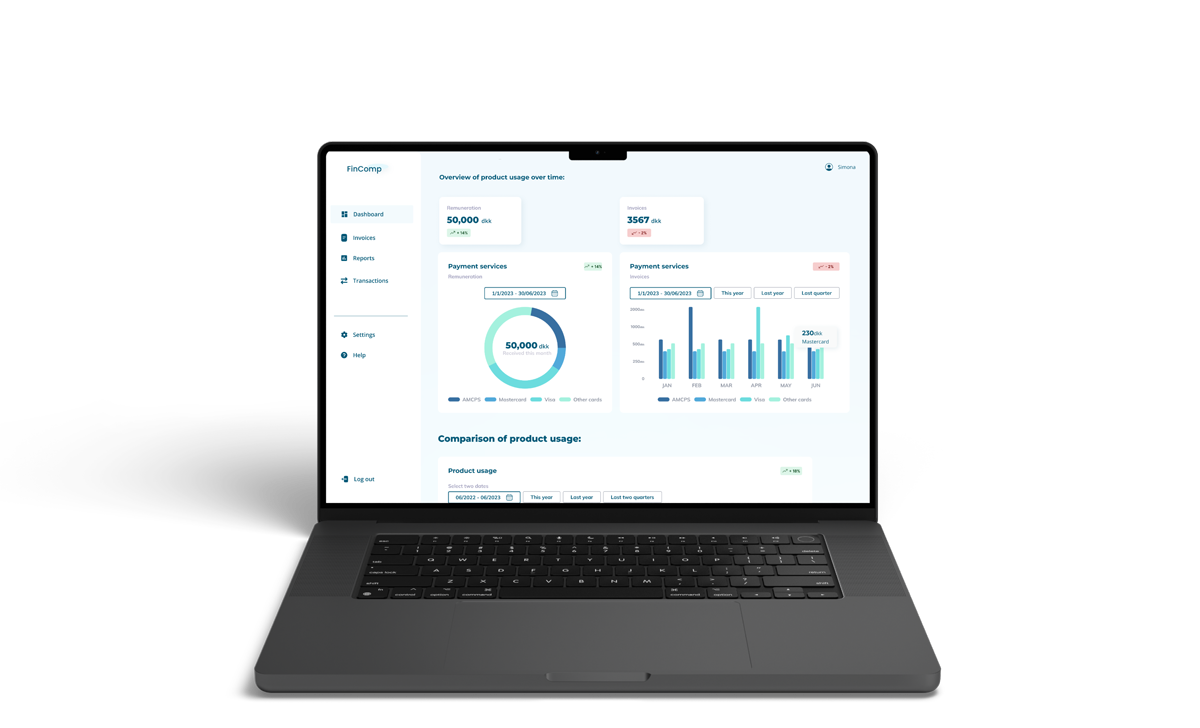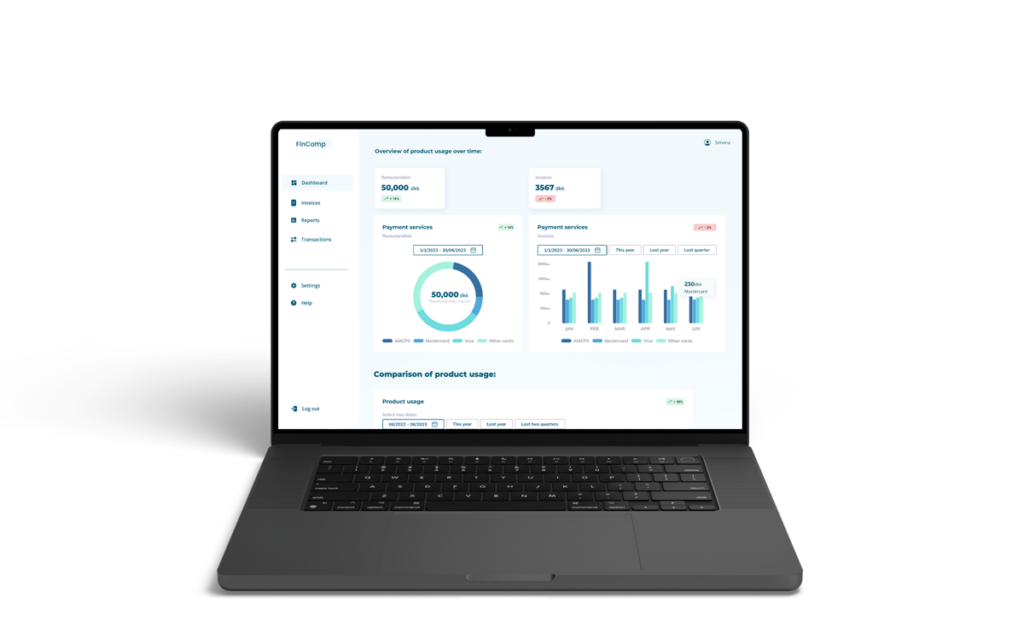Intro
duction
to the assignment
The assignment is based on a Financial company’s invoicing platform. The financial company provides payment solution to their clients. This case was given to me but in order to keep the name of the company anonymous I have changed the products they work with and I am using a fake company name FinComp.
The invoicing platform is a web portal where customers get access to an overview of all invoices and remunerations on the products they purchase from the Financial company – e.g. automatic monthly card payment solution (AMCPS), Mastercard payment, Visa payment, other cards, etc. They access the portal to get information on the costs of our products, to analyse the development in their use of our products, etc.
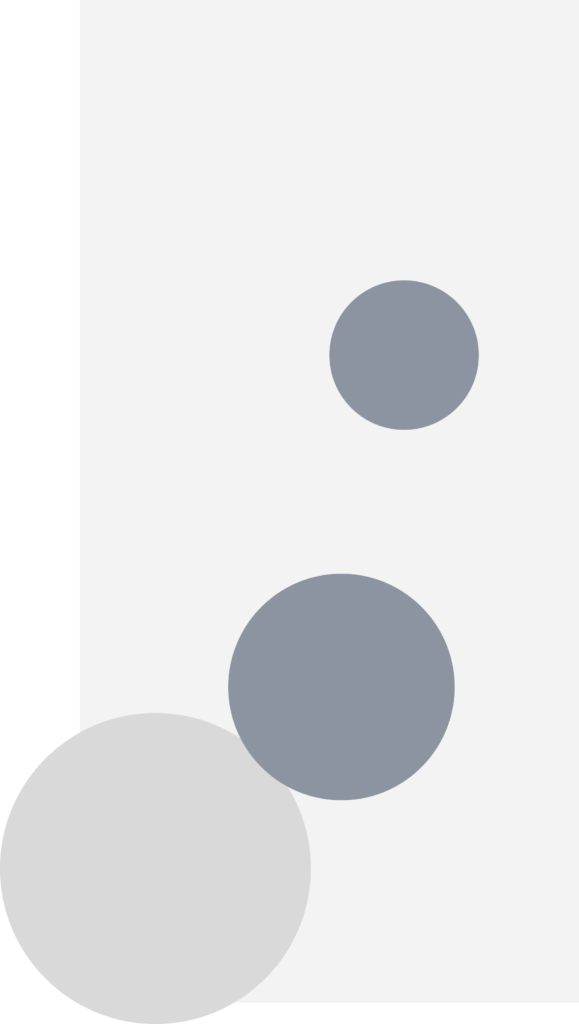
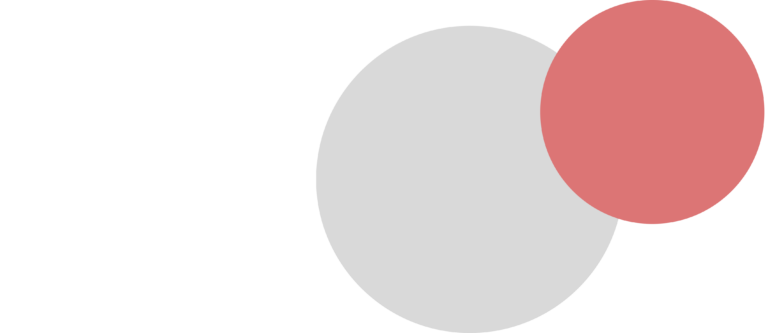
The
assignment
UI task
Present a dashboard on the Analytics page. The Analytics page is used to obtain insights in the data available on the products they purchase from FinTech. The page should contain 3 types of overviews:
- For viewing which products, the customer has used over time (include both invoices and remuneration).
- For following the development in the use of our products (e.g. usages over one year).
- For comparing usage of one or more of our products within chosen time frames (e.g. comparing the use of a product in the month of May current year compared to the year before).
Stakeholders
The assignment is based on a Financial company’s invoicing platform. The financial company provides payment solution to their clients.
The invoicing platform is a web portal where customers get access to an overview of all invoices and remunerations on the products they purchase from the Financial company – e.g. automatic monthly card payment solution (AMCPS), Mastercard payment, Visa payment, other cards, etc. They access the portal to get information on the costs of our products, to analyse the development in their use of our products, etc.
Assumptions
Glossary
For this case I have interpreted the terms invoices and remunerations as following:
Invoices: In the context of the Finance company’s invoicing platform, invoices represent the financial documents issued by the seller (Finance company) to the buyer (customer), requesting payment for goods or services provided. The services provided are AMCPS, Mastercard payment, Visa payment, other cards, etc
Remuneration: Remuneration, in the context of the Finance company invoicing platform, refers to the payments received by the customers for their products or services. It represents the compensation or financial transactions associated with the usage of Finance company’s products or services. From the buyer’s perspective, remuneration represents the payments made with the products purchased from Finance company.
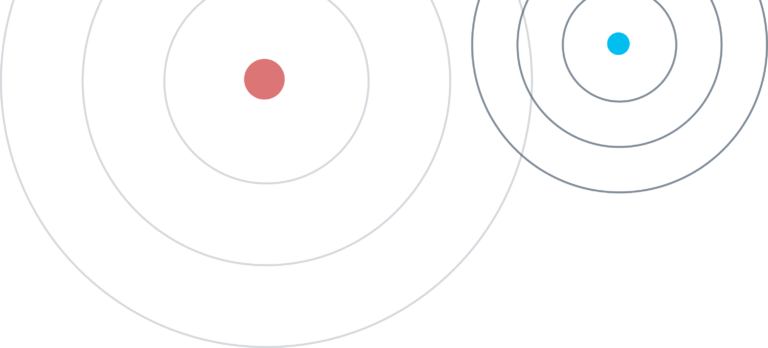
Resources
Needed
In this project, my approach to gathering valuable information for UI/UX design would involve engaging with key stakeholders who can provide insights into the problem at hand. By collaborating with individuals such as the Product Owner/Manager, UX Researcher, customers, and sales or customer success representatives, I can tap into their direct interactions with users and access the most pertinent information for my design process.
To kickstart the information gathering process, I would consult the Product Owner/Manager to gain insights into usage patterns of the product and identify any areas where the Nets invoicing platform might fall short in delivering the desired value. This would help me understand the current state of the platform and identify opportunities for improvement.
Furthermore, I would seek input from the sales or customer success representatives to understand how customers are utilizing the application/platform and what their ultimate goals are. By understanding the customers’ motivations and expectations, I can align my design decisions with their needs. Additionally, I would explore the benefits customers derive from using different products offered by Finance Company, such as the AMCPS, Mastercard payment, Visa payment, other cards, and assess the impact on their business. This information would enable me to tailor the design to enhance their experience and achieve their specific goals.
I would also explore industry-specific usage patterns and determine if personalized experiences are provided based on the industry. By understanding the varying needs and preferences across different industries, I can design interfaces that cater to specific user requirements and provide maximum value.
As part of the information gathering process, I would evaluate the effectiveness of existing dashboards and determine their alignment with the customers’ end goals. I would seek to uncover whether the purpose of the platform is to increase sales or serve other objectives, allowing me to design interfaces that effectively support these goals.
Once I have gathered the necessary data, I would initiate a workshop with the team, including engineers, the Product Owner/Manager, and other relevant stakeholders. During this workshop, I would leverage techniques such as Opportunity Mapping to stimulate creative thinking and generate innovative ideas for improving the user experience. By involving the team in this collaborative session, we can explore cost-efficient ways to enhance the platform while considering technical feasibility.
After consolidating the insights from the workshop, I would seek to engage with a customer to present and validate the different design ideas. This customer-centric approach ensures that the proposed solutions resonate with the end users and address their pain points effectively.
Visualisation
Questions I would ask specific stakeholders
Product owner
- What is the main value of this platform?
- What patterns are we seeing in the usage of the product so far and have you noticed where in the customer journey the invoicing platform is not delivering the desired value
- What are we helping the users to achieve and why?
- How are invoices and renumeration products? Why are they presented together with MasterCard, Visa and other payment solutions?
- What are the best filtering options and why ? What is the user trying to achieve with filtering ?
Sales/CS representative
- What are customers happy about ?
- Where and why do you receive the most complaints about?
- Is our platform delivering the promised value?
- Why do customers need to know what is the usage of the FinComp products in their business?
- What is the outcome for comparison of the usage last year and this year? Why do people need this?
- Are we trying to upsell our products with this application?
Customer interview
- What specific tasks or goals would you expect to accomplish using this dashboard?
- How intuitive and easy to navigate do you find the dashboard interface?
- Are there any specific features or functionalities missing from the dashboard that you would find valuable?
- How would you rate the clarity and readability of the information presented on the dashboard?
- Do you find the visual representation of data (charts, graphs, etc.) helpful in understanding the information?
- Is the dashboard providing you with the necessary insights and overview of your invoices and remuneration?
- Are there any challenges or difficulties you encountered while using the dashboard?
